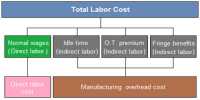A balance sheet consists of the ending balances in the asset, liability, and shareholders equity accounts by the balance page date. This financial statement supplies a view of the financial position of an entity by a specific opportunity.
From top to be able to bottom, the template for just a balance sheet is made up of a header prevent, asset block, along with liabilities and shareholders’ equity block. From remaining to right, template includes outline line items, followed by a column that contain the ending balances in the account aggregations mentioned by each outline line item.
The descriptions of each line system generally found in this balance sheet template are as follows:
Header Block
- Name of the reporting entity. It is the actual name of the reporting entity, such as “XYZ International, Inc.”
- Identification of the balance sheet. This is a report designation, which is “Balance Sheet”.
- “As of” date of the balance sheet. This is the date as of which assets, liabilities, and shareholders equity ending balances are being reported, such as “as of January o1, 20X4”.
Assets Block
- Cash and cash equivalents. This is the amount of cash in the company’s checking and other bank accounts, as well as any assets that are readily convertible into cash.
- Investments. This is amount of any investment instruments purchased by the company. Depending on the situation, these investments may be stated at their historical cost or fair value.
- Accounts receivable. This line item can consist the ending balance of both trade receivables and other receivables, and is typically netted against an allowance for bad debts.
- Prepaid expenses. This line item may contain a number of items that have been paid in advance of when they are actually consumed, and so are considered assets. Examples are prepaid rent and prepaid advertising.
- Inventory. This is the amount invested in raw materials, work-in-process, and finished goods, and may be netted against a reserve for obsolete inventory.
- Fixed assets. This is the amount invested in fixed assets, netted against accumulated depreciation. Examples of fixed assets are office equipment, vehicles, software, buildings, and machinery.
- Other assets. This is a catch all line item that includes any remaining recognized assets of the business.
Liabilities and Shareholders’ Equity Block
- Accounts payable. This is the amount of all invoices received from suppliers for goods received or services performed, which have not yet been paid.
- Accrued expenses. This is the recognized amount of any liabilities for which the company has not yet received invoices from suppliers.
- Accrued wages. This is the recognized amount of any compensation earned by employees, but not yet paid to them.
- Income taxes payable. This is the amount of income taxes that the entity owes to the applicable governments, based on its taxable income, and which it has not yet paid.
- Unearned revenue. This is the amount of any customer payments made to the company that the company has not yet earned through a performance condition.
- Loans payable. This is the remaining amount of loan principal not yet repaid to lenders.
- Other payables. This is a catch all line item that includes any remaining recognized liabilities of the business.
- Common stock. This is the par value paid to the company by investors when they acquire shares from the company.
- Additional paid-in capital. This is the excess amount paid by investors over par value when they buy shares from the company.
- Retained earnings. This is the accumulated amount of profits and losses generated by the organization over time, reduced by any dividends paid to investors.
- Treasury stock. This is the amount of funds paid out by the business to buy back shares from investors. This line item has a negative balance.
The number and description with the line items most notable template can fluctuate substantially, depending on the nature of a profitable business. For example, the assets and liabilities of the casino will fluctuate substantially from those of the insurance company.













